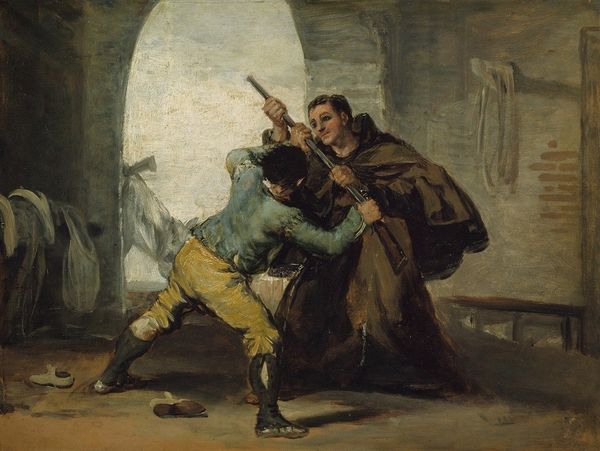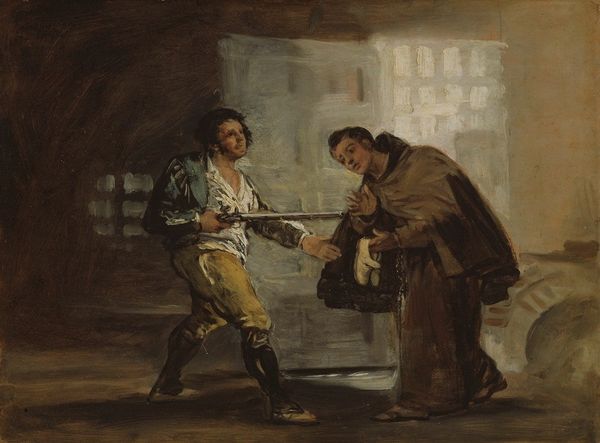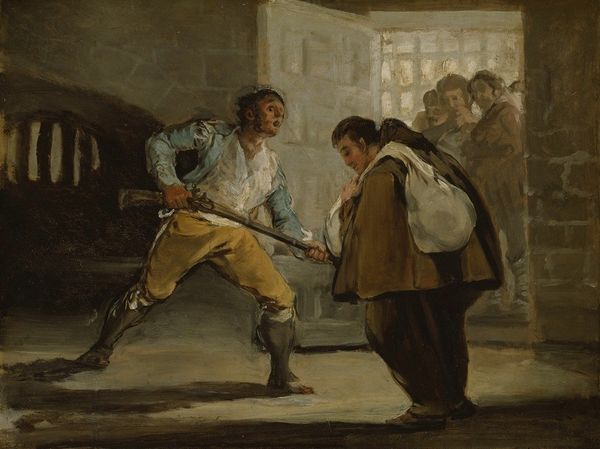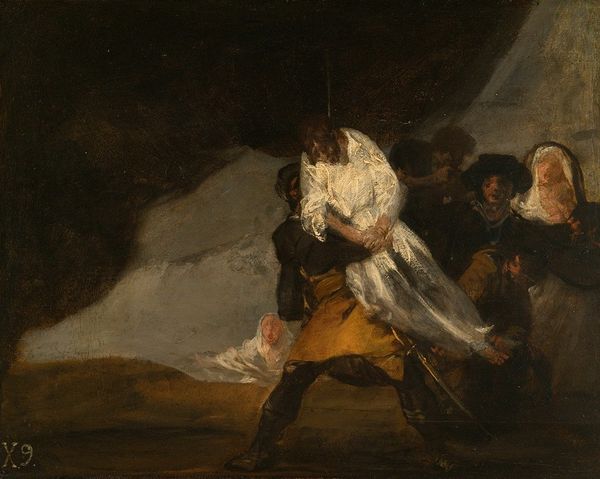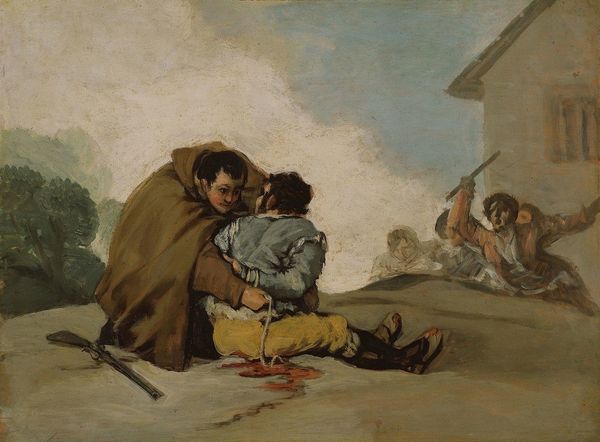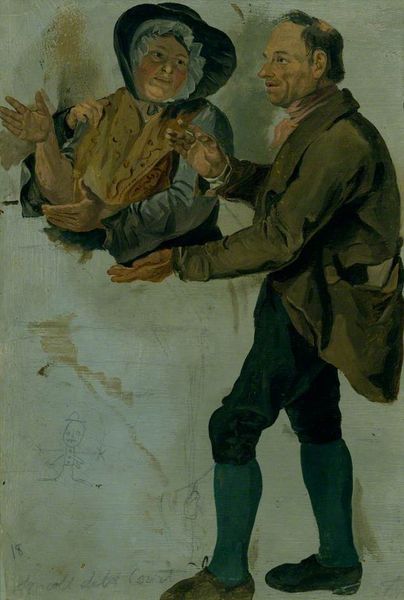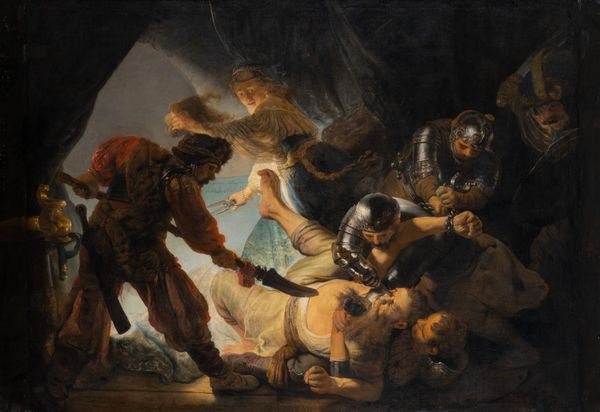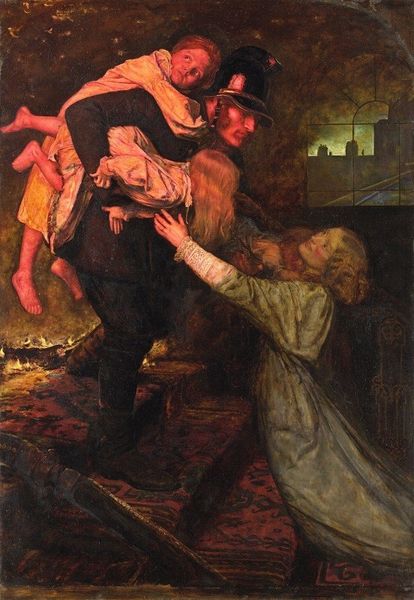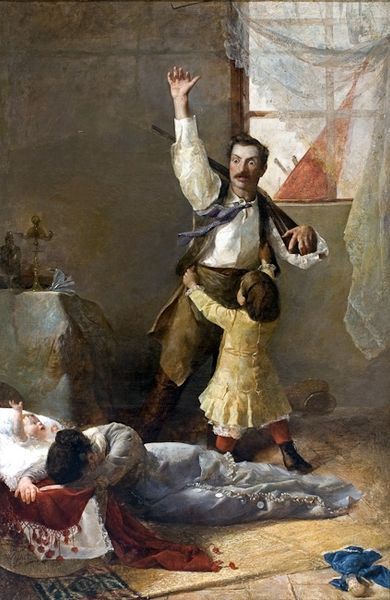
painting, oil-paint
#
portrait
#
figurative
#
painting
#
oil-paint
#
charcoal drawing
#
figuration
#
romanticism
#
genre-painting
#
history-painting
Copyright: Public Domain: Artvee
Curator: Goya's "Friar Pedro Clubs El Maragato with the Butt of the Gun," painted around 1806, confronts us with a stark, brutal scene rendered in oil on canvas. What leaps out at you initially? Editor: A primal scream of a painting, really. It’s a shadowy dance of violence and desperation. The air seems thick, almost viscous, reflecting some past trauma lurking just beyond the frame. Curator: Let’s consider the historical context. This painting belongs to a series Goya created documenting acts of violence. The Romantic era certainly had a preoccupation with dark aspects of human nature. Note also the broad strokes, the visible brushwork—hallmarks of his style and efficient use of materials for an unsettling impact. Editor: And the light. Isn't it intriguing? It's theatrical, almost, pinning the action in the dark, yet doesn’t give clarity, obscuring so much. I feel like I'm spying on some half-glimpsed horror. Curator: We can infer some clues about this context. El Maragato was a notorious bandit, Friar Pedro, his executioner. The making of folk legends from a brutal event becomes fascinating here. Also observe Goya’s use of lead white, an underlayer crucial to creating these luminous effects, a common, if toxic, ingredient in paints of the era. Editor: Right, because even saints can cast a shadow. I imagine there are questions about power here; religious versus rogue. What the people found compelling about justice dispensed with such violence...It all feeds this uneasy mood Goya creates. You’re not merely witnessing, you're complicit. Curator: I think what also stays with me is his subversion of our expectations, right? This act of violence wasn't an exception in that historical era. How the production mirrors social tensions really reveals Goya’s project. Editor: Absolutely. Art, at its most potent, has to force us to see—perhaps to reflect the ugliest things to keep our vision true. Curator: Agreed. And that friction between what’s highlighted and what’s in the shadows makes for some lasting impact here.
Comments
No comments
Be the first to comment and join the conversation on the ultimate creative platform.
